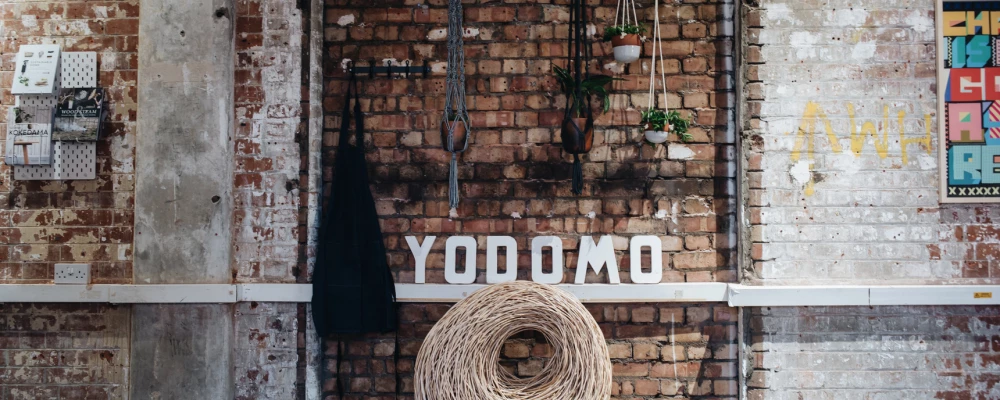
Crowdfunding craft with Kickstarter + Yodomo
Last week we went along to a rather unusual evening event hosted by Yodomo at Second Home in East London for a basket-weaving and Kickstarter workshop. In this article, we share some of the key learnings from the evening on launching a crowdfunding campaign on Kickstarter.
For even more advice, Professional Members can explore:
Pricing Strategies for Ethical Brands Live Q&A
Direct to Consumer Business Strategy and Implementation
To hear from ethical brands who have successfully crowdfunded their businesses, Professional Members can dive into the following interviews:
In this article, we explore:
- Why choose a crowdfunding platform like Kickstarter?
- How do you choose whether your project should be a campaign?
- Does crowdfunding with Kickstarter actually work?
- Tips for the most effective project video, description and rewards.
- Marketing your project.
About Yodomo
Yodomo creates online craft courses. They work with brands, artists and makers to put together kits so that you can learn a new skill. Their tagline is “making made easy”. There’s a real connection between the maker and the making here, helped by Yodomo’s perfect photography, videos and step-by-step instructions that you check as you go on. What’s particularly beautiful about Yodomo is that their passion for craft, making and sharing artists actually gives you free courses alongside the paid, which is perfect if you have a stash of materials you’d like to use up but need some inspiration. You can have an introduction to spoon carving for instance, or making a knotted macramé plant hanger. Each course is approachable for beginners to advanced - these courses act as a starter to a new craft or some time out, and if you would like the materials then there is just a small cost involved. Our sister company and ethical textiles company, Offset Warehouse, partnered with Yodomo and Barley Massey of Fabrications to bring together the cushion kit course.
About Second Home
Second Home is a social business with a mission to support creativity and entrepreneurship in cities around the world. They provide workspaces for entrepreneurs, innovators and social businesses - including Kickstarter’s London Outreach team. The Spitalfields location honestly is what you’d probably want as your first home, let alone your second, but that just shows how well they’ve done in creating a space you want to work and be creative in.

About the evening
We sat down in a cosy meeting room full of 1970s furniture, plush carpet and with locally sourced beverages to listen to Heather Corcoran talk to us about how to set up a Kickstarter campaign - and why you would choose them. Heather mainly works with product and tech companies, and advises 20-30 UK-based projects per month, helping to bring them to life. She is actually split between London and Liverpool, so the outreach scope here is vast - it’s not just about creativity in the capital. Heather took us through a short presentation on what Kickstarter is, how it can be beneficial to you and how to run a successful campaign.
Why choose a crowdfunding platform like Kickstarter?
Kickstarter’s mission is to bring creative projects to life. You can find projects from films, to fashion, to products to art. Examples of high-profile projects include the award-winning film Period. End of Sentence., and Ai Wei Wei’s trees. Backers support a project due to the belief that the idea should exist. Heather herself has backed 250 in her short time with Kickstarter.
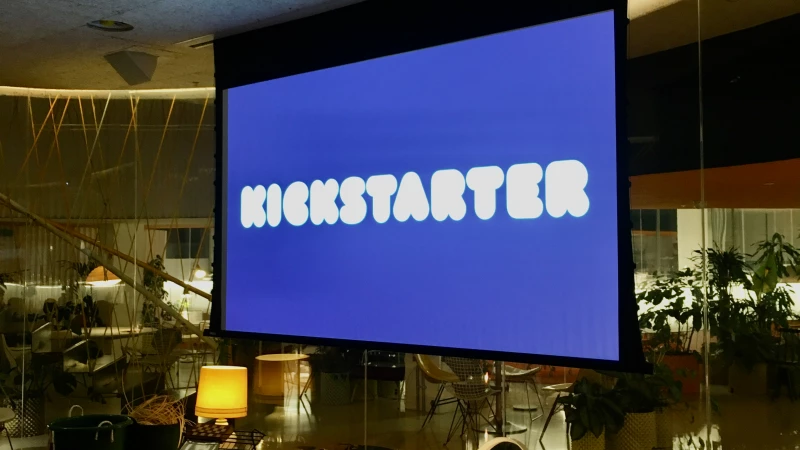
But why choose Kickstarter (or any other crowdfunding platform) over venture capital? Kickstarter believe that they help reduce barriers and allow businesses to take risks. You can launch a campaign for a small project to test out what Kickstarter can offer, but also test out if the market likes your product or service. You can use it for small product runs as Granby Workshop did, or if you’re in the middle of a project but your investor backs out, Kickstarter can be the platform to reduce gatekeepers to keep your wheels in motion.
It can also be used to launch creative businesses, for example like Lucy Sparrow did with her felt corner shop who has now gone on to have these cute installations all over the world after setting up the first in London. Kickstarter builds a community around an idea, and gives you the opportunity to reach those you may not have thought would be your market.
How do you choose whether your project should be a campaign?
If your project has a story, surrounds your practice or is about a community then you have something compelling already. Kickstarter is about the stories, not just the product or service you’re trying to raise capital for. Can your project engage a community both close and far? Does it have compelling rewards? Heather’s tips for choosing your project and planning your campaign are:
- Get the story/practice/community element right
- Think about what community you can engage
- Come up with compelling rewards
- Ensure it’s tangible i.e. a viable funding amount
- Be comfortable sharing and inviting people to view your process, your designs
Kickstarter backers support projects guided by the belief that an idea should exist in the world

Does crowdfunding with Kickstarter actually work?
51% of UK-based projects actually reach their funding goal - the highest in the world. The average funding is from £1000 to £10000 - small projects are the “bread and butter” of Kickstarter. A key reason behind businesses not launching crowdfunding campaigns is the thought of not reaching their goal, therefore losing all of the time and energy that went into it. What if you reach 80% of your goal by the day your deadline comes and you consequently lose all of the possible funding?
51% of UK-based Kickstarter campaigns reach their funding goal - the highest crowdfunding rate in the world.

The way all crowdfunding campaigns work is by storing backers’ card information but only charging when the campaign reaches its goal. Heather explains that if you got to 80% with only a few days to go, as a business owner or product inventor you would be maniacally pushing your friends and local community to back you. Otherwise, she says that 80% of projects that reach even 20% of their goal will get funded. Not reaching a funding goal is both bad for you and for those that believed in your story, so you can use it as collateral to find other means.
Small projects are the bread and butter of Kickstarter

What Heather points out, is that you should create a funding target higher than you would require in order to create a compelling and urgent story. Don’t shoot too low just to cover yourself as this may be the one push you have. It should be noted that Kickstarter take 5% of the goal in fees, while credit card transaction fees are at 3%. Therefore, when choosing your funding goal, you should take this into account.
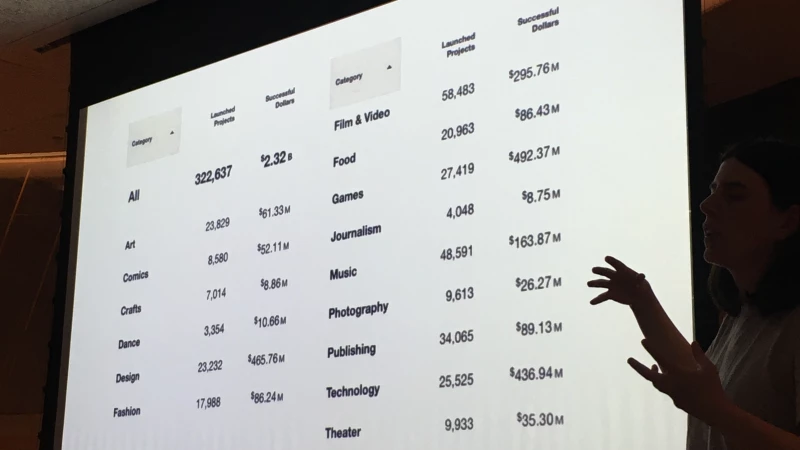
The project video
All Kickstarter campaigns must have a video. It doesn’t need to be professionally made, though it does visually help: good sound and lighting are a necessity. A video must:
- Be 2-3 minutes long
- Have a “hook” from human connection, some personality
- Have beautiful imagery of the product or service
Heather showed us one example of a project she recently worked on and actually we were very disappointed that we hadn’t been on Kickstarter to know of it! Astounding concept, gorgeous product and a really lovely business with purpose. Granby Workshop was highlighted by Heather for their video, but really it is the whole story that got them £19000 over their £50000 goal, and was actually their second Kickstarter campaign.
You should cover:
- Give a snapshot of the project in 15 seconds
- Bring the experience or mission to life in 15 seconds
- Introduce who you are and your process in 15-30 seconds
- Dive deeper
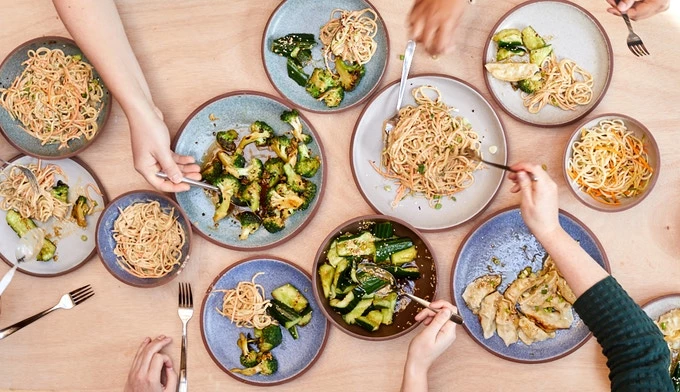
The project description
This is basically a copy of the video you've produced, but it gives you more space to highlight the who, what, where and why of your project. You should also use this space to talk in more detail about the rewards and why they’re so great, as well as the timeline e.g. when the backer will receive their product or experience.
- Who are you?
- What are you planning to make?
- Where did this project come from?
- What's your plan and schedule?
- What's your budget?
- Why do you care?
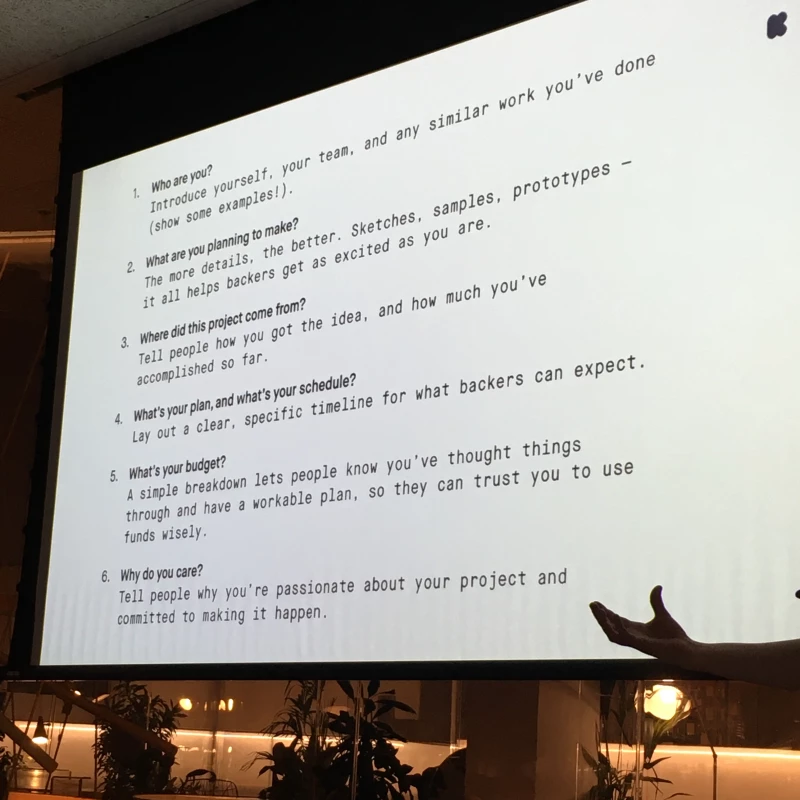
The project rewards
Heather outlined 4 key ways that you can reward a backer for their money and support.
- The product itself e.g. one cup, pair of cups, full crockery set
- Acknowledgement as a sort of sponsorship e.g. if you’re making a film you can highlight that person in some way through credits or more creatively
- A memento such as a smaller, much cheaper version of the piece of artwork e.g. Science Museum robot
- An experience e.g. workshop with the maker, a private view of the art
The project outreach
Your campaign hype can reflect your funding goal. If you’re hoping to raise £1000 for instance, you can start your launch hype a month before the launch date, however, if you’re going for £5000 then the hype should start more like 2 months in advance. You can set up a mailing list so that your community can be kept in the loop about your campaign, from what it is and the rewards on offer, to the launch dates and funding goal. It means that they can also start talking about you. You want to create a network map to reach out - and can even be a physical brainstorm if that helps visualise all of the people you want to reach.
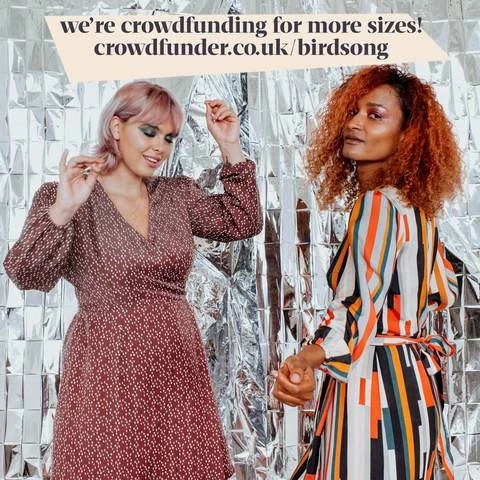
Heather pointed out here that the mailing list can give you a good idea of where you’ll be with your funding. It would be likely that 5% of your mailing list would actually back you. There is already 20% of backers already using Kickstarter that you’ll be able to reach through your campaign page. So then it would be a case of finding the other 75% from word of mouth and promotions. You can definitely send a press release to journalists and blogs to increase the numbers talking about you.
Birdsong, London-based social enterprise actually have their mailing list open during their crowdfunder so that web visitors can continue to follow the journey. If Birdsong is close to their goal with only a few days left, they can easily send out a newsletter to give followers and backers the incentive to share the news.
A fashion designer at the event asked the serious question of intellectual property and is one reason why makers and creators may not want to put their project out there. Launching your campaign means that others can see your work, and in theory, copy to release their own. Heather explains that there isn’t a real difference of that to the normal world. Even if you had a gap of 6 months before your product was available (unless perhaps you were Zara) would the item or service have been created elsewhere. Unfortunately, if you don’t invite people into your story and practice, then your crowdfunding campaign won’t have the elements that make it so compelling.
It may even be that by exploring Kickstarter, you can network with businesses you could collaborate with, so even if you're not in the zone to back a campaign or even launch your own, it could be a nice bit of market research.
You can find information on how to get started by using The Creator Handbook on Kickstarter’s website, available for free.
We like:
- these fashion products using recycled materials
- a particular London favourite, Dalston's urban farm and neighbourhood cafe Snackbar
- sustainable beekeeping retreat from Woodland Adventure Creative Classroom
Now on to the basket weaving!
Julia Clarke is a sculptor who primarily works with wood, creating both hand-sized and large-scale pieces. Her sculptures appear both durable and fragile, yet most have functionality to them. Julia says that she's fascinated by vessels. She is a Yodomo instructor, so on the course listings, you'll find workshops from Julia on how to make a willow star and a kit for a decorative woven basket. We were to create a variation on the basket, but instead of using rice bags (that you pop to leave the woven basket frame) we wove split cane around a pebble. This created something weighty, akin to the concentration on everyone's faces as they learnt this new skill. The rhythm of weaving and tactility of materials is what draws Julia to this method of working, and it was in this workshop that we too were able to escape for a moment into this rhythm and feeling. The final pebble was nowhere near as intricate as Julia's, but it was an unexpected gift to have from the evening.
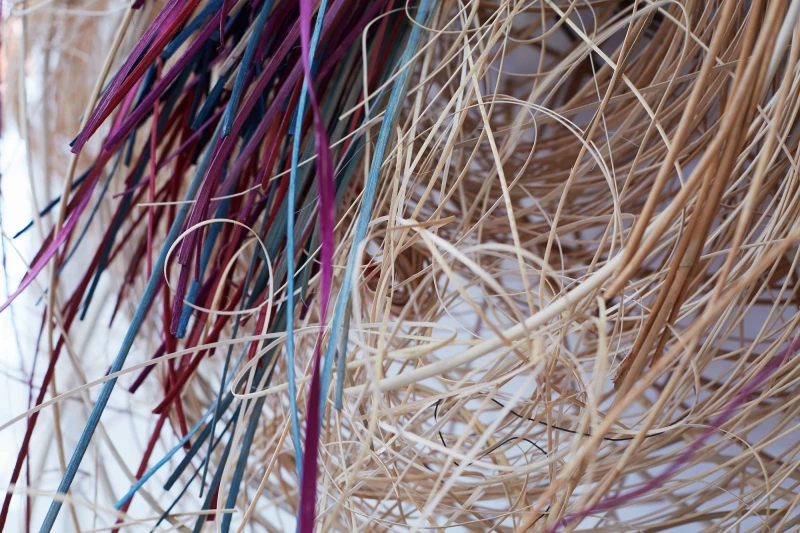
Although you wouldn't necessarily put crowdfunding and sculpture together, the two worlds (at least for 2 hours) collided. The power of learning through craft brings an awareness to the body and to the materials. Crowdfunding is a way for stories, practices and ideas to reach a wider audience, and through backing campaigns, or even launching your own, it is an acceptance and motivation to bring something into the world. As craft skills have diminished with a dependence on technology, online courses and crowdfunding campaigns restore tangibility to our innate desire to create. It's said that we're not as connected anymore because we're always on computers and phones, and in some ways that's true, yet it cannot be denied that technology has allowed us to create communities where previously it wouldn't be possible.
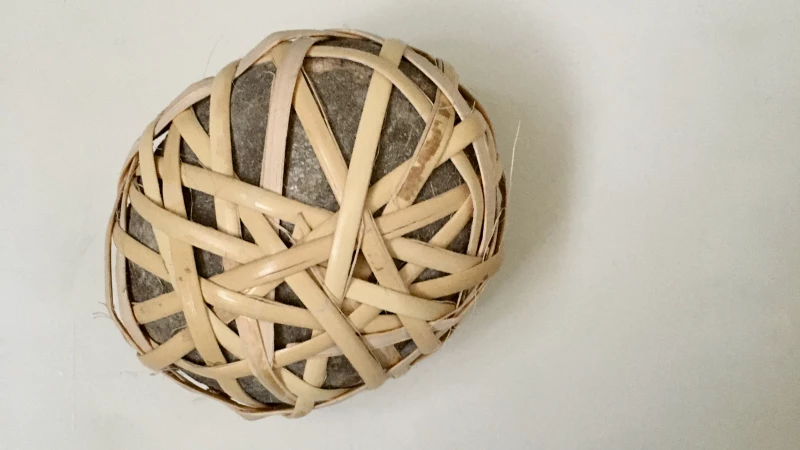
Thank you to Yodomo, Kickstarter and Julia Clarke for hosting this lovely evening. You might want to sign up to Yodomo's newsletter as they're about to launch their own crowdfunding campign with Seedrs in order to scale their offering and provide more opportunity for improving wellbeing through making.
